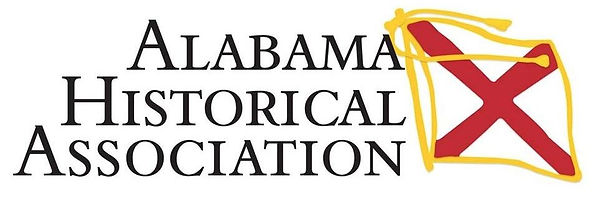
Albert Love Patterson
January 27, 1891 - June 18, 1954
Born at New Site, Alabama, he grew up working on his parents' farm. In 1916 he worked in the oil fields in Texas and joined the Texas National Guard. He married Agnes Benson of Alabama in 1917. In 1918 he was commissioned an officer in the 36th Infantry Division. He was wounded by machine gun fire at St. Etienne, France, during World War I and awarded the French Croix de Guerre with gilt star for bravery. He later received the Purple Heart. His wounds left him crippled for life, but his spirit was undaunted.
Returning to Alabama, he served as a school teacher, principal and member of the Phenix City School Board, serving as chairman for six years. He graduated from the University of Alabama in 1924, received a law degree from Cumberland School of Law in Tennessee, and practiced law in east Alabama from 1928 until his death. He represented Russell and Lee Counties in the State Senate from 1946 to 1950, and was active in the Methodist Church and various civic organizations. Albert Patterson is remembered as an honest man with the courage to stand by his convictions in the face of great adversity.
---------------------------Reverse-----------------------
Albert Love Patterson
The Coulter Building housed the law office of Albert Patterson. Patterson won the Democratic nomination for Attorney General of Alabama on June 4, 1954, campaigning on a platform to end criminal activity in Phenix City and the public corruption that allowed it to flourish. As a consequence of his efforts and his support of the Russell Betterment Association, Patterson was fatally shot on June 18, 1954 in the parking lot next to this building. Martial law was declared and General Walter J. "Crack" Hanna and the Alabama National Guard came to Phenix City. The sacrifice of Albert Patterson led to the restoration of law and order in Phenix City.
[2006: 5th Ave., Phenix City, 32.47363N 84.99948W]
Colonel John Crowell’s Race Track
During the early 19th century, Colonel John Crowell, United States Indian Agent from 1821 to 1836, used this field as a track to train his race horses. His famous champion, John Bascombe, won the North-South Race at Union Course, Long Island, New York, in 1836.
[2014]
Early Brickyards
The rich clay deposits along the high western bluff of the Chattahoochee River led a pioneer family to begin producing brick here. In 1839, brothers Anderson and Charles Abercrombie acquired a large tract of land from the U.S. government as a result of the Treaty of 1832 with the Creek Nation. By the 1840s, their expansive cotton-producing plantation included a small brickyard, the site of which became Brickyard, Alabama. Captain James Abercrombie, whose plantation lay to the north of his brothers’ land, established brickyards in Pensacola, Florida during the 1850s that produced brick for U.S. Army forts off the Gulf Coast, including Fort Jefferson on Dry Tortugas. An Alabama and U.S. legislator, James was also director of the Mobile & Girard railroad, which served Brickyard and enabled Abercrombie bricks to reach Columbus and markets to the south. In 1885, James Henry Bickerstaff and his brother William Jefferson Bickerstaff, Jr. bought the Abercrombie plantation and quickly expanded its brick-making operations. This partnership formed Bickerstaff Brick Company that eventually became one of the largest family-owned brick manufacturers in North America.
[2014]
Little Prince
(Tustunnuggee Hopoi)
According to Alabama historian Peter Brannon, the remains of Little Prince, a Creek Indian chief, were buried near this site. Little Prince lived at Broken Arrow and was a principal chief of and speaker for the Lower Towns of the Creek Nation in the late 18th and early 19th centuries. He died in 1832.
[2014]
May 28th Celebration --Battle and Antioch Communities
Russell County, Alabama
President Abraham Lincoln issued the Emancipation Proclamation in 1863, in the midst of the Civil War. Freedom for the South's slaves, however, only came with the end of the conflict, April 1865. The joyous news reached Negro slaves in this area in May. Since that time, May 28th has been established as a community holiday to commemorate a day of freedom, attracting celebrants from all over the nation. "Thank God we are in His care."
[1998: Rutherford Rd. at Mandy Rd., Battle 32.47363N 84.99948W]
Fort Mitchell
Five miles -- Built during Creek War 1813 by Georgia Militia on main Indian trade route to Tombigbee River. U.S. troops stationed here until 1837. 1836 Lower Creeks corralled here for forced removal to the West.
[Before 1965: Hwy 165 south of Phenix City, 32.34628N 85.01737W]